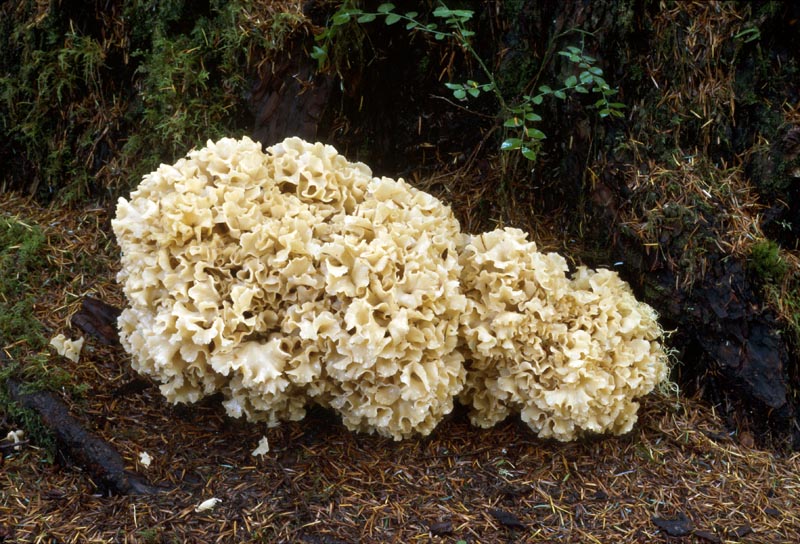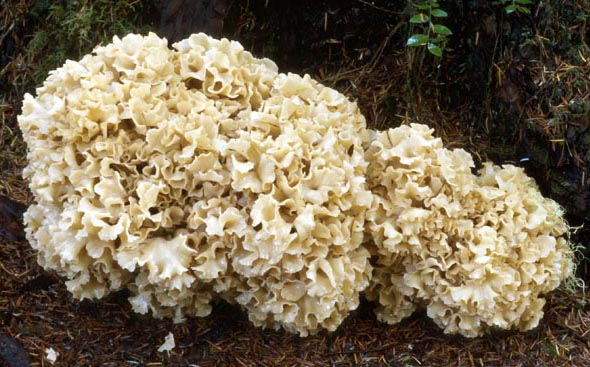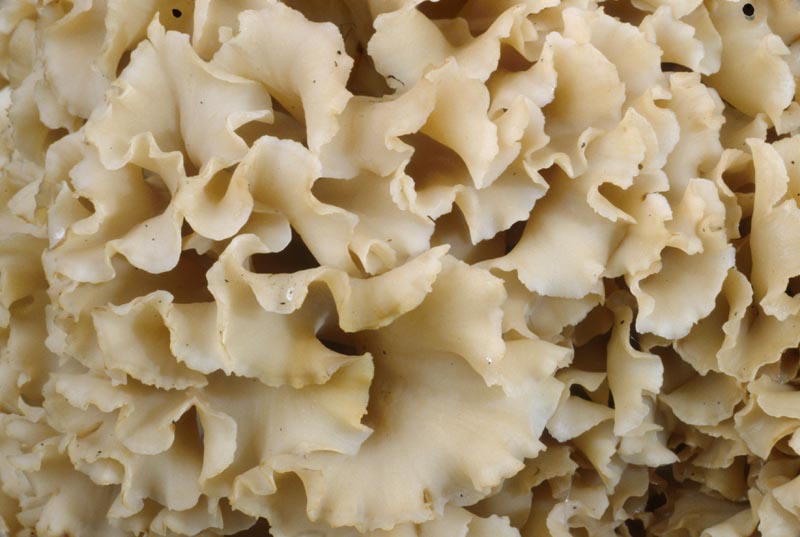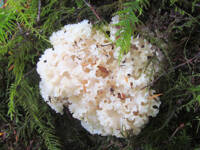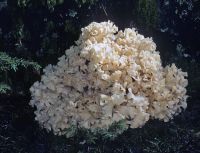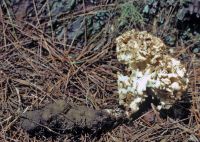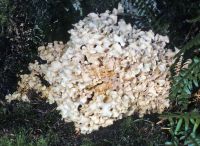Distribution: It occurs in northern North America, Europe, and Asia.
Spores: The spores are white and may be produced on both surfaces of the leaf-like branches.
Conservation Status: Not of concern
Edibility: S. crispa can grow quite large from its root-like base (fruitbodies weighing over 50 pounds [22 kg] occur), although the older giants usually are of lower quality for the table than younger, smaller individuals. Such young specimens are among the most highly sought-after edible mushrooms in the PNW.
S. crispa can grow quite large from its root-like base (fruitbodies weighing over 50 pounds [22 kg] occur), although the older giants usually are of lower quality for the table than younger, smaller individuals. Such young specimens are among the most highly sought-after edible mushrooms in the PNW.
Although Sparassis crispa is commonly known as the cauliflower fungus, it actually looks less like that vegetable than do many ramarias, such as R. magnipes. To us, the broad, flat, cream-colored, fan-like branches are much more similar to short egg noodles. Regardless of its vegetable likeness, this fungus can hardly be confused with any other in the PNW (there are other species of Sparassis elsewhere that can cause confusion). . S. crispa is a parasite of tree roots, especially those of Douglas-fir, and fruitbodies often will re-occur in the same spot, although not necessarily every year.
PNW Herbaria: Specimen records of Sparassis crispa in the Consortium of Pacific Northwest Herbaria database
CalPhotos: Sparassis crispa photos

